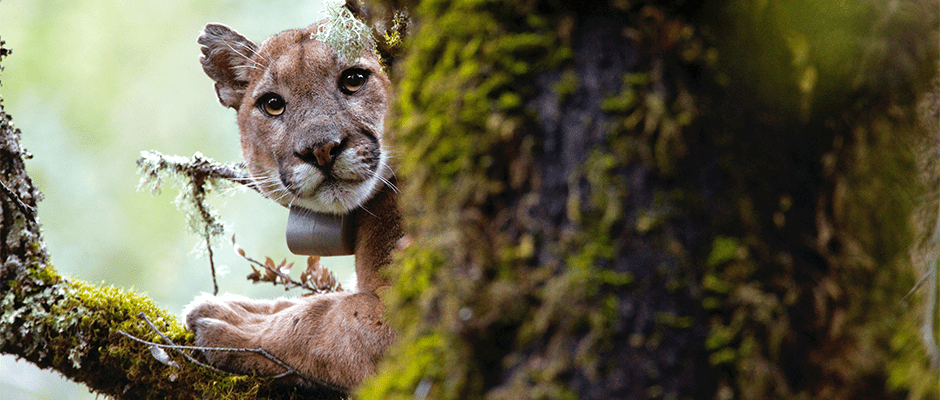Share this article
Human voices scare away pumas
They may look big and tough, but pumas (Puma concolor) might be as afraid as humans as many humans are of them.
In a new study published in the Proceedings of the Royal Society B, researchers played sound recordings of people talking to determine if the big cats would be scared away, and they were surprised by their findings.
“We’ve been trying to understand how pumas coexist with people,” said lead author Janine Smith, who is a postdoctoral researcher at the University of California, Berkeley and a TWS member. “The Santa Cruz Puma Project has been studying pumas in the Santa Cruz Mountains since 2008. There’s still a healthy population of mountain lions there even though it’s heavily human populated.”
In previous research, Santa Cruz Puma Project scientists found the species doesn’t den close to residential areas and it spends less time at kill sites in areas disturbed by humans. This time, Smith and her team wanted to find out if the presence of humans themselves — not just cars or construction noises — bothered the pumas. “Clearly, they should fear people because people are a major threat to large carnivores and have persecuted them for a long time,” she said. “We didn’t know if they were fearful of us directly.”
Using information collected from GPS collars to find fresh kill sites, Smith and her colleagues set up video camera traps linked to a speaker at each site. When the pumas walked in front of the camera trap, the speaker broadcasted noises of people speaking in conversational tones. As a control, Smith and her colleagues used frog sounds.
The team found that all the mountain lions studied fled from the carcasses they were consuming every time they heard the human sound recordings. “We thought there would be more variability because of possible habituation to people, but that wasn’t the case,” she said.
Nearly half never returned to the site where they had heard humans, the team found, and those that did return killed and fed on carcasses significantly less at the sites. “It was pretty dramatic. I didn’t think it would be so extreme,” she said.
While fear response could be helpful in keeping humans and pumas away from one another, Smith said, her findings raise concerns about other impacts, including potential effects on puma reproduction near humans or how differing kill rates of deer may affect the ecosystem.
“There’s so much potential for increased interaction from large carnivores and people, particularly in the West where they’re recovering,” Smith said. “We’re trying to restore them, and what’s happening simultaneously is we’re developing in those areas. It’s important to consider this increased overlap and what to expect from ecosystems in the future and how they are functioning as we continue to overlap with them.”
Header Image:
A GPS-collared puma hides peeks its head out from behind a tree branch.
©Sebastian Kennerknecht/pumapix.com








